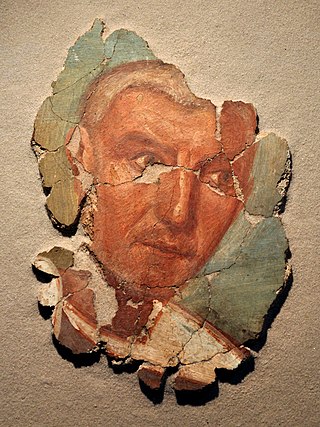Related Research Articles

A, or a, is the first letter and the first vowel letter of the Latin alphabet, used in the modern English alphabet, and others worldwide. Its name in English is a, plural aes.

The Cyrillic script, Slavonic script or simply Slavic script is a writing system used for various languages across Eurasia. It is the designated national script in various Slavic, Turkic, Mongolic, Uralic, Caucasian and Iranic-speaking countries in Southeastern Europe, Eastern Europe, the Caucasus, Central Asia, North Asia, and East Asia, and used by many other minority languages.

The Celts or Celtic peoples were a collection of Indo-European peoples in Europe and Anatolia, identified by their use of Celtic languages and other cultural similarities. Major Celtic groups included the Gauls; the Celtiberians and Gallaeci of Iberia; the Britons, Picts, and Gaels of Britain and Ireland; the Boii; and the Galatians. The relation between ethnicity, language and culture in the Celtic world is unclear and debated; for example over the ways in which the Iron Age people of Britain and Ireland should be called Celts. In current scholarship, 'Celt' primarily refers to 'speakers of Celtic languages' rather than to a single ethnic group.

The Italic languages form a branch of the Indo-European language family, whose earliest known members were spoken on the Italian Peninsula in the first millennium BC. The most important of the ancient Italic languages was Latin, the official language of ancient Rome, which conquered the other Italic peoples before the common era. The other Italic languages became extinct in the first centuries AD as their speakers were assimilated into the Roman Empire and shifted to some form of Latin. Between the third and eighth centuries AD, Vulgar Latin diversified into the Romance languages, which are the only Italic languages natively spoken today, while Literary Latin also survived.

Gaul was a region of Western Europe first clearly described by the Romans, encompassing present-day France, Belgium, Luxembourg, and parts of Switzerland, the Netherlands, Germany, and Northern Italy. It covered an area of 494,000 km2 (191,000 sq mi). According to Julius Caesar, who took control of the region on behalf of the Roman Republic, Gaul was divided into three parts: Gallia Celtica, Belgica, and Aquitania.

Deira was an area of Post-Roman Britain, and a later Anglian kingdom.
ISO/IEC 8859-14:1998, Information technology — 8-bit single-byte coded graphic character sets — Part 14: Latin alphabet No. 8 (Celtic), is part of the ISO/IEC 8859 series of ASCII-based standard character encodings, first edition published in 1998. It is informally referred to as Latin-8 or Celtic. It was designed to cover the Celtic languages, such as Irish, Manx, Scottish Gaelic, Welsh, Cornish, and Breton.
ISO 15919 is one of a series of international standards for romanization by the International Organization for Standardization. It was published in 2001 and uses diacritics to map the much larger set of consonants and vowels in Brahmic and Nastaliq scripts to the Latin script.

The Italic peoples were an ethnolinguistic group identified by their use of Italic languages, a branch of the Indo-European language family.

Latin liturgical rites, or Western liturgical rites, is a large family of liturgical rites and uses of public worship employed by the Latin Church, the largest particular church sui iuris of the Catholic Church, that originated in Europe where the Latin language once dominated. Its language is now known as Ecclesiastical Latin. The most used rite is the Roman Rite.

The Latin script, also known as the Roman script, is a writing system based on the letters of the classical Latin alphabet, derived from a form of the Greek alphabet which was in use in the ancient Greek city of Cumae in Magna Graecia. The Greek alphabet was altered by the Etruscans, and subsequently their alphabet was altered by the Ancient Romans. Several Latin-script alphabets exist, which differ in graphemes, collation and phonetic values from the classical Latin alphabet.

The Nemetes E.g. Frederick Kohlrausch "History of Germany. From the Earliest Period to the Present Time". D.Appleton and Company, New York, 1880. were a tribe settled along the Upper Rhine by Ariovistus in the 1st century BC.

Extended ASCII is a repertoire of character encodings that include the original 96 ASCII character set, plus up to 128 additional characters. There is no formal definition of "extended ASCII", and even use of the term is sometimes criticized, because it can be mistakenly interpreted to mean that the American National Standards Institute (ANSI) had updated its ANSI X3.4-1986 standard to include more characters, or that the term identifies a single unambiguous encoding, neither of which is the case.

In ancient Roman religion and mythology, Mars is the god of war and also an agricultural guardian, a combination characteristic of early Rome. He is the son of Jupiter and Juno, and was pre-eminent among the Roman army's military gods. Most of his festivals were held in March, the month named for him, and in October, the months which traditionally began and ended the season for both military campaigning and farming.

Gallo-Roman culture was a consequence of the Romanization of Gauls under the rule of the Roman Empire. It was characterized by the Gaulish adoption or adaptation of Roman culture, language, morals and way of life in a uniquely Gaulish context. The well-studied meld of cultures in Gaul gives historians a model against which to compare and contrast parallel developments of Romanization in other less-studied Roman provinces.

The Gauls were a group of Celtic peoples of mainland Europe in the Iron Age and the Roman period. Their homeland was known as Gaul (Gallia). They spoke Gaulish, a continental Celtic language.

Celtic mythology is the body of myths belonging to the Celtic peoples. Like other Iron Age Europeans, Celtic peoples followed a polytheistic religion, having many gods and goddesses. The mythologies of continental Celtic peoples, such as the Gauls and Celtiberians, did not survive their conquest by the Roman Empire, the loss of their Celtic languages and their subsequent conversion to Christianity. Only remnants are found in Greco-Roman sources and archaeology. Most surviving Celtic mythology belongs to the Insular Celtic peoples. They preserved some of their myths in oral lore, which were eventually written down by Christian scribes in the Middle Ages. Irish mythology has the largest written body of myths, followed by Welsh mythology.
Gaulish is an extinct Celtic language spoken in parts of Continental Europe before and during the period of the Roman Empire. In the narrow sense, Gaulish was the language of the Celts of Gaul. In a wider sense, it also comprises varieties of Celtic that were spoken across much of central Europe ("Noric"), parts of the Balkans, and Anatolia ("Galatian"), which are thought to have been closely related. The more divergent Lepontic of Northern Italy has also sometimes been subsumed under Gaulish.

The Christian cross, with or without a figure of Christ included, is the main religious symbol of Christianity. A cross with a figure of Christ affixed to it is termed a crucifix and the figure is often referred to as the corpus.
This is an extension of ISO 8859-14 for Windows CeltScript fonts. It deprecated CER-GS when this character encoding was updated in August 1998. FreeDOS calls it Code page 59620.
References
- 1 2 "CER-GS" . Retrieved 27 February 2017.
- ↑ "Latin 8 Extended" . Retrieved 27 February 2017.
- ↑ Everson, Michael (2002-04-27), CER-GS (Celtic Extended Roman GS)